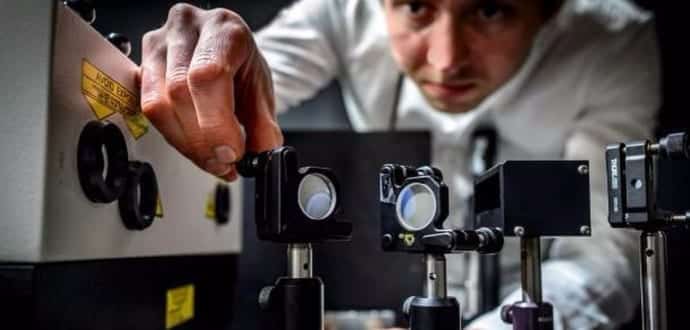World’s fastest film camera can ‘capture’ light
We all know that according to Einstein’s theory, nothing can travel faster than the speed of light in a vacuum that makes it difficult to capture.
But, now researchers at Lund University in Sweden have built the world’s fastest film camera that is capable of taking five trillion images per second, which means an image every 0.2 trillionths of a second. In other words, the camera is fast enough to visualize the movement of light or capture molecular processes.
The camera could be used to observe extremely rapid natural processes and reactions in chemistry, physics, biology and biomedicine that until now have not been captured on film, researchers said.
“This does not apply to all processes in nature, but quite a few, for example, explosions, plasma flashes, turbulent combustion, brain activity in animals and chemical reactions. We are now able to film such extremely short processes,” Elias Kristensson, co-inventor of the camera and combustion physics researcher, said.
The researchers exposed an object to be filmed to brief flashes of laser light, which were reflected by the object. The new technology called Frequency Recognition Algorithm for Multiple Exposures (FRAME) is based on an innovative algorithm, and instead captures several coded images in one picture and later sorts them into a video sequence. This method took four separate images per frame instead of taking images one by one in a sequence, like other high-speed cameras.
Actually, the process takes a picosecond or femtosecond – one trillionth, or one millionth of one millionth of a second. Using the camera, researchers can break the process down into an observable action, slowed down by a factor of one trillion.
“Today, the only way to visualize such rapid events is to photograph still images of the process,” Kristensson said. “You then have to attempt to repeat identical experiments to provide several still images which can later be edited into a movie. The problem with this approach is that it is highly unlikely that a process will be identical if you repeat the experiment.”
While there are many possible uses for the technology, the researchers’ are focussing on combustion. Combustion is a chemical reaction between a fuel and oxygen, which generates heat. Researchers say that their breakthrough technology can be used to make fuel-burning machines (such as car engines, gas turbines, and boilers) more energy-efficient by examining combustion at every fleeting, minuscule stage.
“In the long term, the technology can also be used by industry and others,” Kristensson said.
The researchers’ findings of the camera technology were published in the journal Light: Science and Applications.
The previous ‘world’s fastest camera’ record was held by the University of Tokyo, which managed a paltry 4.4 trillion frames per second.
Check out the video below:

